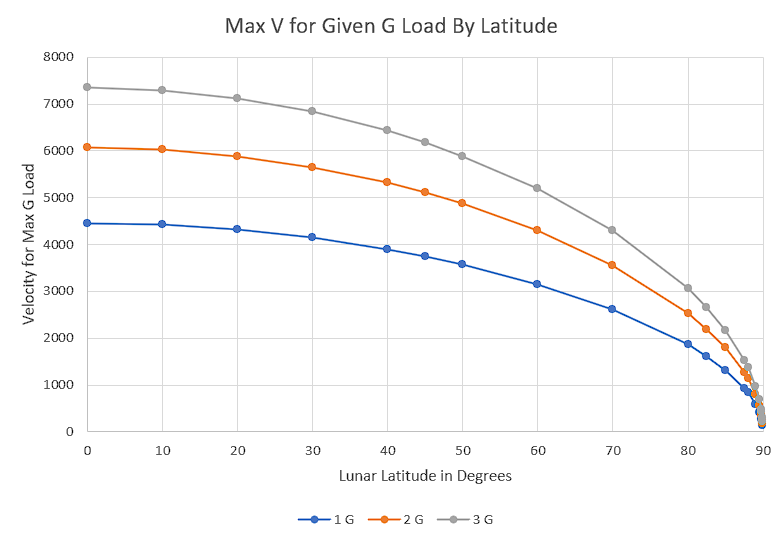Leaving the Moon for the Stars
Could humanity one day build a launch system on the Lunar surface that would allow a spacecraft to escape our Solar System.
Technicaly sure, (well that was easy) No, bad parenthetical me, we want to actually talk about stuff. (can we just say that it would be hard?)
The above was brought to you by Obie’s inability to create a cohesive intro.
Basically late one night I started to wonder, how fast could you launch something off the moon using a “linear” launcher? The reason linear was in quotes here is that I wanted to build said accelerator on the surface of the moon, roughly following the curvature of the moon. That means that while at human scales our track way would look like a straight line, from the perspective of a space craft in orbit above the moon, the track would in fact have a curve.
Continuing my theme of non-rocket based ways to launch cargo off the Lunar surface we are going to look at some math that most physics students could do, but hey the visualization was helpful for me to get more concrete on concepts and hopefully some of you enjoy.
To achieve escape velocity from the moon you need your spacecraft to achieve a velocity of about 2,380 m/s or just shy of mach 7. For perspective the fastest crewed aircraft on Earth, the SR-71 had a maximum velocity of Mach 3.3.
Our interstellar payload would need to achieve a velocity of 42,130 m/s to leave our solar system. That’s crazy fast, almost 18x faster than lunar escape velocity. For perspective only 4 spacecraft (as of April 2024) have gone faster. Now what would launching such a payload from the surface of the moon look like?
Some starting assumptions, our vehicle will be accelerating along the lunar equator, this helps to minimize the total centrifugal acceleration the spacecraft will undergo. Our accelerator is magically able to survive the loading produced by the launch process and can continue to increase the velocity of the spacecraft until it achieves escape velocity.
Knowing all of these factors crunching the numbers aren’t too bad. Centrifugal acceleration is calculated by squaring of vehicle’s velocity and dividing it by the radius of the path. In this case (42,130 m/s)^2/1,737,400 m minus lunar acceleration of 1.62 m/s^2 gets a peak outward acceleration of 1020 m/s^2 or just shy of 104 Gs.
Ok so we can launch some science payloads or some mission re-supplies into the interstellar void, but not living people. What could we do with a linear launch system assuming track length wasn’t the main limiting factor. As noted earlier that our interstellar launcher would need to be placed at the Lunar equator this chart.
A chart showing the maximum velocity a vehicle could achieve for a given maximum load condition based on the lunar latitude in degrees.
We can see that as our track way moves further from the equator the velocity at which our payload experiences maximum allowable centrifugal acceleration goes down. For payloads limited to less than 3 Gs of acceleration, it is not possible for a payload to be launched at escape velocity at latitudes greater than 85 degrees (assuming the track follows lines of latitude).
This reinforces that linear space-craft accelerators are not a panacea for the challenges of designing inter-planetary/stellar launch solutions. Building a “linear” accelerator on a planetary body that follows any kind of planetary curvature will produce centrifugal loading that will wildly limit the kinds of materials that can be launched. While orbiting linear accelerators would be massive, an accelerator that would leave its human crew comfortable, no more than 1 G of acceleration, would need to be 90,500 km long, more than 7 times the diameter of the Earth.
External accelerator systems make the most sense when they are used at scales of operation where the investment can be amortized countless launches.
Hopefully this was interesting, it was certainly cathartic for me to get this question a bit more sussed out.
Questions and comments are always welcome

